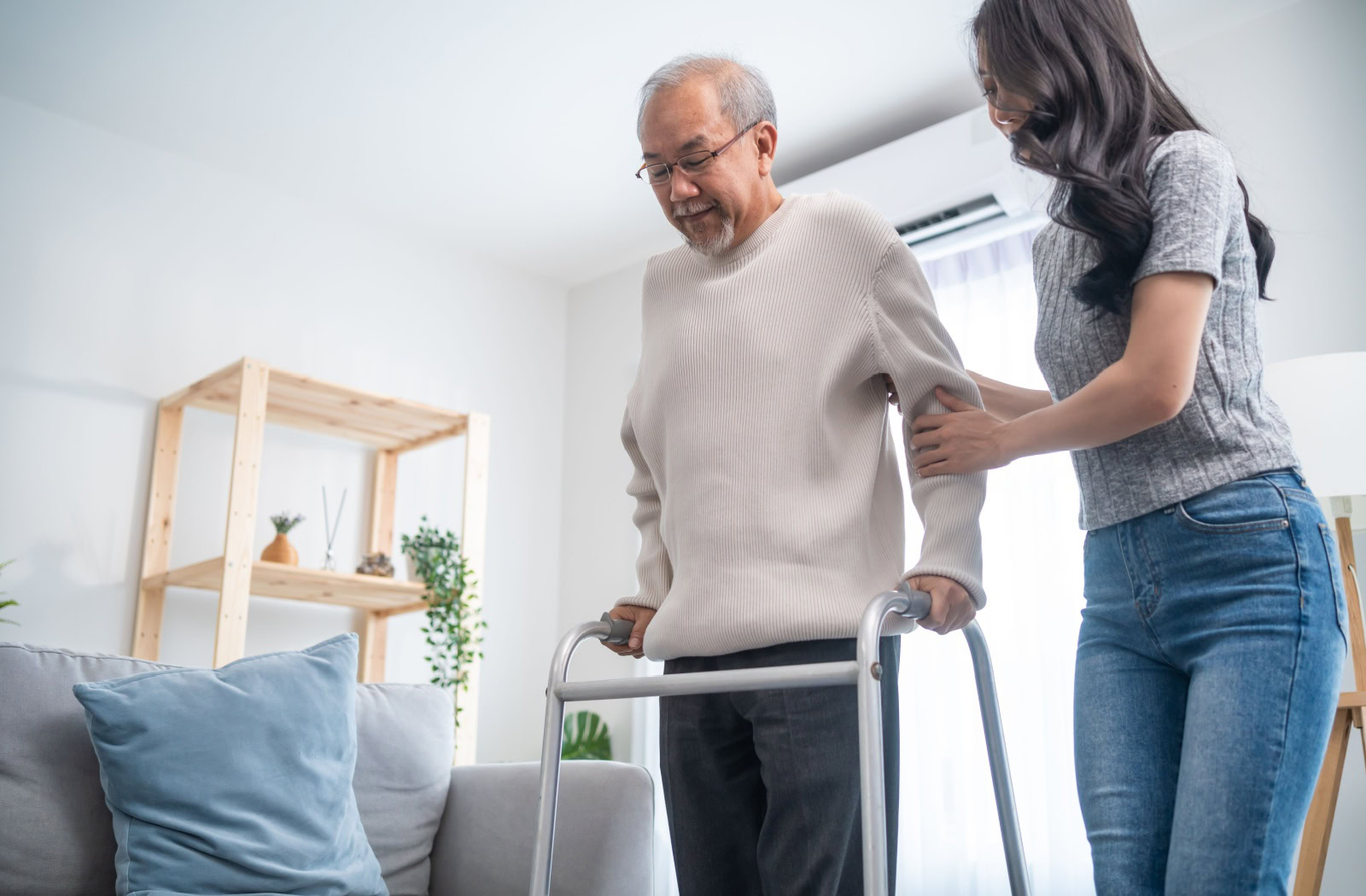What to Do When an Elderly Parent Can’t Walk?
- Posted on
- By Mira Vie Senior Living

There are several reasons why an elderly parent may struggle with walking. It could be due to age-related conditions such as arthritis, osteoporosis, or Parkinson’s disease. It could also be a result of an injury or surgery. Whatever the reason may be, it is important to address this issue and find ways to help your parent continue living a fulfilling life.
Here are some steps you can take to support your elderly parent when they can’t walk:
- Consult with a doctor or physical therapist
- Make necessary home modifications
- Encourage regular exercise
- Consider mobility aids
- Provide emotional support and understanding
- Address any underlying medical conditions
- Create a safe environment
- Encourage socialization
Consult with a Doctor or Physical Therapist
The first step in addressing any walking difficulties is to consult with a medical professional. They can help determine the root cause of the issue and provide recommendations for treatment options. This may include medication, physical therapy, or surgery depending on the individual’s specific needs.
Make Necessary Home Modifications
If your parent’s walking difficulties are due to balance or mobility issues, it may be necessary to make some modifications to their living space. This could include installing handrails along stairways and in bathrooms, removing tripping hazards such as loose rugs, and rearranging furniture to create wider pathways.
Encourage Regular Exercise
Regular physical activity is important for maintaining strength, balance, and mobility. Encourage your parent to engage in low-impact exercises such as walking, swimming, or tai chi. These activities can help improve their overall physical health and make it easier for them to move around.
Consider Mobility Aids
There are a variety of mobility aids available that can help your parent maintain their independence and safety while walking. This could include a cane, walker, or wheelchair depending on their specific needs. It’s important to consult with a medical professional before purchasing any type of mobility aid to ensure it is the right fit for your parent.
Provide Emotional Support & Understanding
Adjusting to life with limited mobility can be challenging for your parent, both physically and emotionally. It’s important to provide them with emotional support and understanding during this time. Encourage them to talk about their feelings and offer a listening ear.
Address Any Underlying Medical Conditions
Walking difficulties can be a symptom of an underlying medical condition such as arthritis, Parkinson’s disease, or stroke. It’s important to address these conditions to improve your parent’s overall mobility. Work closely with their healthcare team to manage any existing conditions and prevent further complications.
Create a Safe Environment
In addition to making modifications to the home, it’s also important to create a safe environment for your parent when they are out walking. This could include avoiding uneven surfaces or obstacles, using well-lit pathways, and avoiding inclement weather conditions. Ensuring a safe environment can help prevent accidents and falls.
Encourage Socialization
Limited mobility can sometimes lead to feelings of isolation and loneliness. It’s important to encourage your parent to continue socializing and participating in activities they enjoy. This could include joining a senior center or participating in virtual events with their friends and family.
How Senior Living Communities can Help
If your parent’s mobility issues become too challenging to manage at home, you may want to consider looking into senior living communities. These residential care homes are designed to cater to the needs of older adults and offer various levels of care depending on an individual’s specific needs.
Accessible Living Spaces
Senior living communities are built with accessibility in mind. This means that your parent will have access to amenities and common areas without having to worry about stairs or narrow hallways. The living spaces are also usually equipped with grab bars and other safety features to help prevent falls.
On-site Healthcare Services
Many senior living communities have on-site healthcare services available for residents. This could include physical therapy, occupational therapy, and other specialized services to help improve mobility and maintain independence.
Social Opportunities
Living in a senior community also provides ample opportunity for socialization. With organized activities and events, your parent can engage with their peers and make new friends. This can be especially beneficial for those who may have limited mobility and struggle to get out of the house on their own.

Assistance with Daily Tasks
For seniors who need assistance with daily tasks such as bathing, dressing, or meal preparation, senior living communities offer support from trained caregivers. This can ease the burden on family members and provide peace of mind knowing that your loved one is receiving proper care.
Supporting Independence with Personalized Care & Mobility Assistance for Residents at Mira Vie
Mobility issues are a common challenge faced by seniors, but there are various options available to help make their living situation more manageable. By considering senior living communities, you can provide your loved one with the support and care they need while also promoting independence and socialization.
At Mira Vie Senior Living, we understand the importance of providing a safe and comfortable living environment for seniors. Our assisted living and memory care services are designed to help residents maintain their independence while also receiving personalized care and support. Contact us today to learn more about our community and how we can assist your loved one with their mobility needs.
Related Articles

How to Build a Fulfilling Morning Routine for Seniors
Key Takeaways A consistent morning routine helps establish a sense of purpose and supports overall